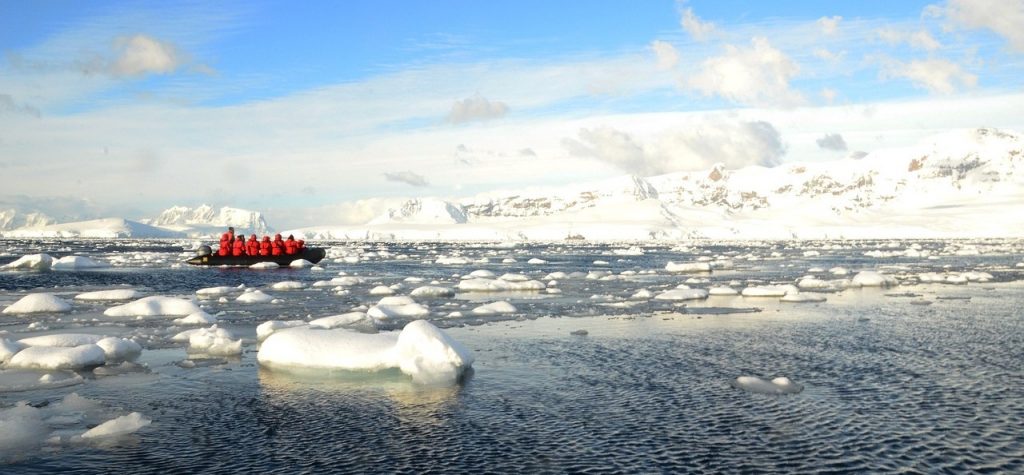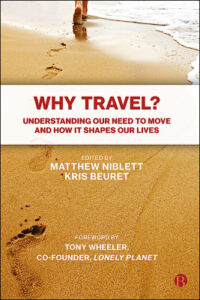Largest ever all-female expedition to Antarctica: exploration, adventure travel and gender
September 2017
The Homeward Bound project is recruiting for its third all-female expedition to the Antarctic which, with over 80 participants, is set to be the biggest ever all-female expedition to the continent. The aims of the project are to “heighten the influence and impact of women with a science background in order to influence policy and decision making as it shapes our planet.” The project is now in its third year, with the first expedition successfully completed in March 2017 and the second cohort due to set sail early next year.
Although the largest, the Homeward Bound project is not the first all-female expedition. In 1878 renowned American astronomer Professor Maria Mitchell organized the Vassar Women’s College solar eclipse expedition. Professor Mitchell’s aims were not purely scientific: she wanted to demonstrate that women could undertake scientific work and to provide role models for the generation to come. Just as with the Homeward Bound project, science, travel, politics and gender intertwined.¹ It seems from news coverage of the time that Mitchell’s expedition made quite an impression: “from the mound where the group stood there radiated a light, that sent its rays hopefully into more than one woman’s heart — a heart with longings for study, culture, improvement, that the simple fact of her being a girl had unjustly deprived her of because old prejudices had hedged her path and defined her duties.”²
In addition to the pioneering Professor Mitchell, there have been other celebrated women explorers and travelling scientists. For example Isabella Bird (1831-1904), who travelled widely across Asia as a naturalist, photographer and writer and was the first woman to be elected a fellow of the Royal Geographical Society.³ And Mary Kingsley (1862-1900), who travelled in uncharted parts of Africa collecting scientific specimens for the British Museum, and whose travel writings championed the rights of indigenous peoples. The journeys of these female scientists were foreshadowed in the early modern period by the adventurous travels of other famous women. For example, Lady Mary Wortley Montagu, whose letters from her travels in the Ottoman Empire in the early 18th century are said to have inspired later female travellers. And Mary Wollstenecraft (now famous as a founder of feminism), who travelled alone with her maid and baby in remote Scandinavia at the end of the 18th century. However, whilst these women are still remembered as inspirational characters, being female they were more the exception than the rule.
The rarity of women travelling on scientific expeditions reflects wider gender differences in travel norms and behaviours throughout history and across many cultures. Men tend to dominate in the public sphere, and this has historically included travel. As examined in previous posts on this blog, women have been subject to curfews and restrictions on travelling without male guardians or without male permission. In the past women were regarded by many as bad luck on board ships, which led to some intrepid women travelling in disguise (for example Jeanne Baret who disguised herself as a man in order to circumnavigate the globe as ship’s naturalist in the late 18th century).[4]
In many parts of the world today travel has become very popular amongst women: recent figures from East Asia and the US both show that women now travel more as tourists than men do and increasingly alone or in all-female groups.[5] Despite this trend, more risky and adventurous travels and expeditions tend to be dominated by men and are often portrayed in the media as ‘macho’ activities.
Earlier this year commentators noted that under a quarter of the titles shortlisted for the Dolman Travel Writing Award were by female authors.[6] Travel writer Vicki Brown argues that the problem is not just one of numbers but of content and presentation. In a recent post on her blog Brown writes that the female-authored travel books which she found in a station bookstore (only 16 out of 106 titles) all shared a certain look and narrative. Female travel was presented in “curly girly” fonts and told stories of self-discovery, particularly self-discovery which enables the author to find love and “settle down”. Brown argues that there are other stories for female travellers to tell but that the publishing industry and perhaps the taste of readers seems to favour this ‘girly’ presentation of female travel. However, others such as blogger Mariellen Ward believe that travel aims are very strongly gendered: “It is my view that men and women each have a different approach to exploring. While men seek to conquer, women seek to understand.”[7]
In certain contexts it is possible to discern marked differences in the travel behaviours and attitudes of men and women across the world. Understanding the motivations that drive travel behaviour is a central focus of The Independent Transport Commission’s Why Travel? Project, which looks at the history and future of human travel from a broad range of perspectives. The project examines psychological and biological drivers as well as the economic, cultural and social structures we have created that all enable, control and shape our travel behaviour. Ultimately, this deeper understanding will help us to make better decisions in future regarding human travel and transport, and the myriad areas of life which travel touches on. For more information on the project, including news and expert views, see www.whytravel.org.
See also:
Travel and Gender blogpost
Exploration topic page
Women in Expeditions, a thesis looking at women in RGS-funded expeditions since 1913
Notes
¹ As Dr Emily Thomas explains in her forthcoming chapter on exploration, the history of science is linked inseparably with travel as natural philosophy developed from a practice of sitting and reasoning to one of getting out and collecting data from the world. In the 18th and 19th centuries expeditions became a central part of the practice of science and the cultural restrictions women faced in travelling played some part in their more limited participation in scientific endeavours.
² https://undark.org/article/wilo-maria-mitchell-astronomer-eclipse/
³ The RGS was founded in 1830 and lifted its ban on female membership in 1913.
[5] For more on this see Hazel Andrews’ forthcoming chapter on Tourism, and http://kto.visitkorea.or.kr/eng/tourismStatics/keyFacts/KoreaMonthlyStatistics/eng/inout/inout.kto and http://gutsytraveler.com/women-travel-statistics-women-travel-trends/
[6] https://www.theguardian.com/books/2017/feb/28/where-female-travel-writers-gone-sara-wheeler



